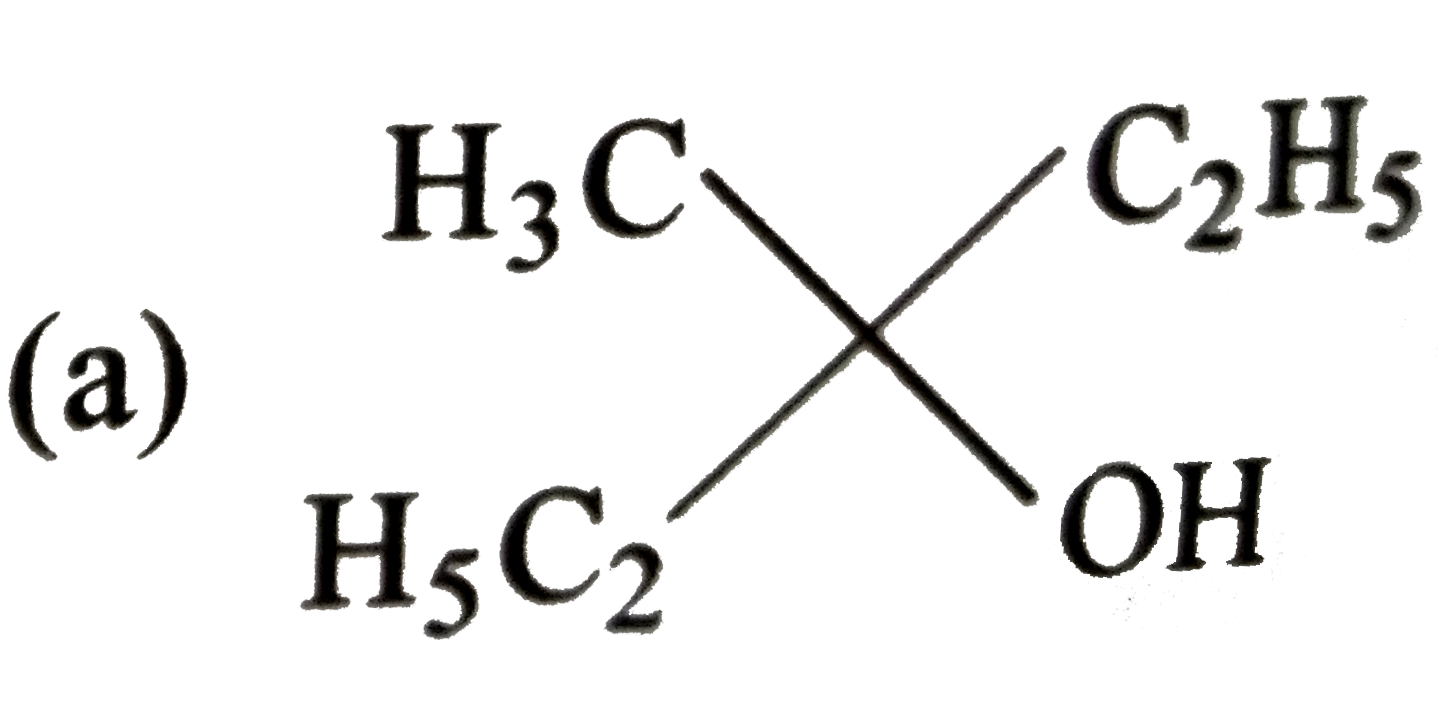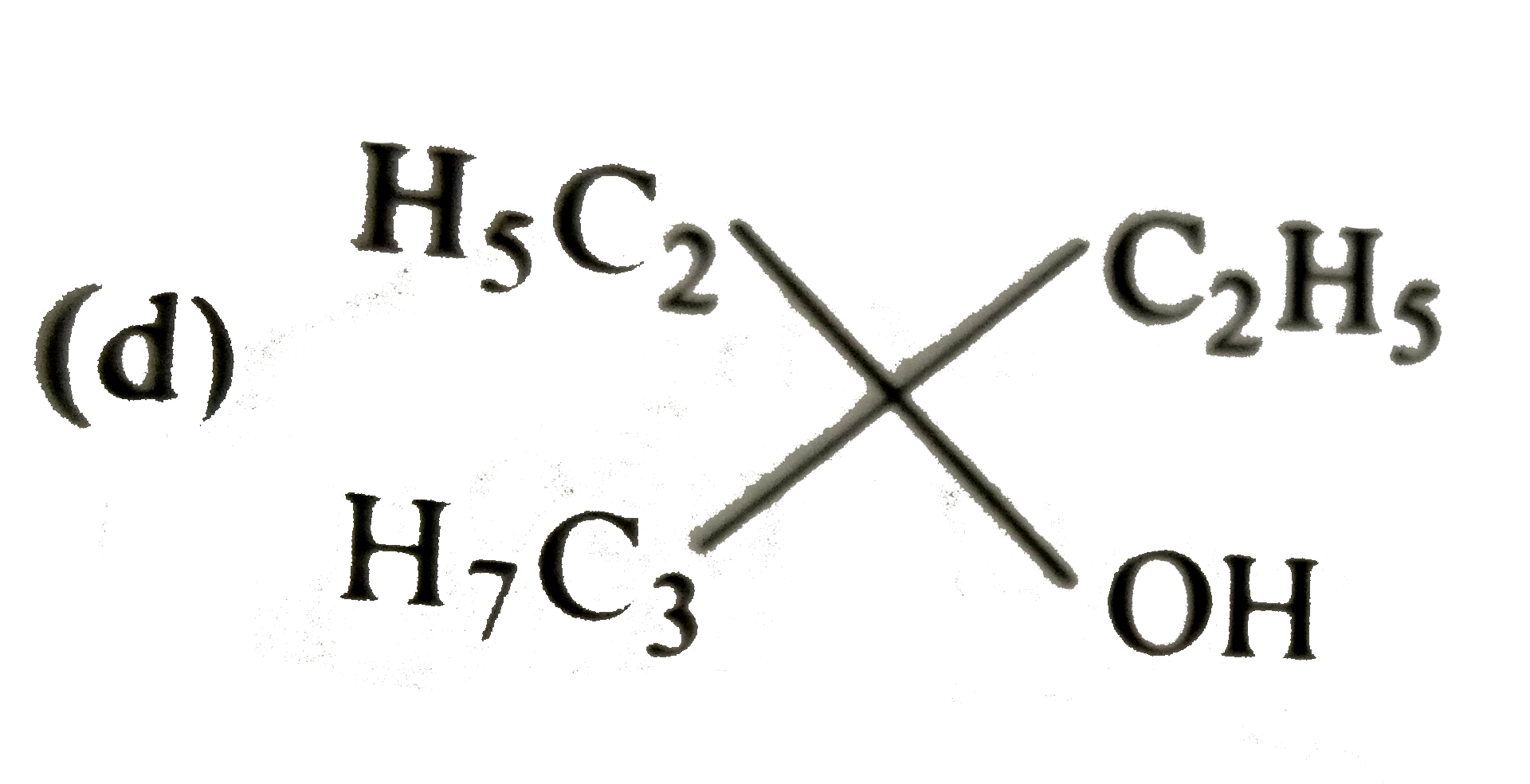Statement 1: Ethyl pent-3-ynoate react with CH3MgBr than we will get 3∘ alcohol as a main product.
Statement 2: 1mole of ethyl pent-3-ynoate use 2 mole of CH3MgBr to produce 3∘ alcohol.
Statement 1 is true, Statement 2 is true, Statement 2 is the correct explanation of statement 1.
Statement 1 is true, Statement 2 is true, Statement 2 is not the correct explanation of statement 1.
Statement 1 is flase, Statement 2 is true
Statement 1 is false, Statement 2 is false
To solve the problem, we will analyze the two statements regarding the reaction of ethyl pent-3-ynoate with CH₃MgBr (a Grignard reagent) step by step.
Step 1: Understand the structure of ethyl pent-3-ynoate
Ethyl pent-3-ynoate is an ester with the following structure:
- It has a total of 5 carbon atoms (pent-).
- It contains a triple bond (yn) at the 3rd carbon.
- The ester functional group is represented by the "oate" part.
The structure can be drawn as:
CH3∣CH3−CH=C=CH−CO−O−CH2−CH3
Step 2: Identify the reaction with CH₃MgBr
When ethyl pent-3-ynoate reacts with CH₃MgBr, the Grignard reagent acts as a nucleophile. The nucleophilic carbon (from CH₃) will attack the electrophilic carbon of the carbonyl group (C=O) in the ester.
Step 3: First attack of the Grignard reagent
The nucleophile (CH₃⁻) attacks the carbonyl carbon, leading to the formation of a tetrahedral intermediate:
CH3∣CH3−CH=C=CH−C(OH)−O−CH2−CH3
This intermediate has a negatively charged oxygen (O⁻) and a hydroxyl group (OH).
Step 4: Elimination of the leaving group
The negatively charged oxygen can reform the carbonyl group by expelling the ethoxy group (O-CH2-CH3) as a leaving group:
CH3∣CH3−CH=C=CH−C=O−CH3
Step 5: Second attack of the Grignard reagent
The carbonyl carbon is still electrophilic, so another mole of CH₃MgBr can attack this carbon, leading to another tetrahedral intermediate:
CH3∣CH3−CH=C=CH−C(OH)−CH3
Step 6: Hydrolysis
Finally, hydrolysis of this intermediate will yield the final product, which is a tertiary alcohol:
CH3∣CH3−CH−C(OH)−CH2−CH3
Conclusion
The final product is a tertiary alcohol, confirming Statement 1 is true.
Statement 2 Analysis
Statement 2 states that 1 mole of ethyl pent-3-ynoate uses 2 moles of CH₃MgBr to produce the tertiary alcohol. This is also true, as we used 2 moles of CH₃MgBr during the reaction.
Final Answer
Both statements are true, and Statement 2 correctly explains Statement 1.
Ethyl pent-3-ynoate is an ester with the following structure:
- It has a total of 5 carbon atoms (pent-).
- It contains a triple bond (yn) at the 3rd carbon.
- The ester functional group is represented by the "oate" part.
CH3∣CH3−CH=C=CH−CO−O−CH2−CH3
When ethyl pent-3-ynoate reacts with CH₃MgBr, the Grignard reagent acts as a nucleophile. The nucleophilic carbon (from CH₃) will attack the electrophilic carbon of the carbonyl group (C=O) in the ester.
The nucleophile (CH₃⁻) attacks the carbonyl carbon, leading to the formation of a tetrahedral intermediate:
CH3∣CH3−CH=C=CH−C(OH)−O−CH2−CH3
This intermediate has a negatively charged oxygen (O⁻) and a hydroxyl group (OH).
The negatively charged oxygen can reform the carbonyl group by expelling the ethoxy group (O-CH2-CH3) as a leaving group:
CH3∣CH3−CH=C=CH−C=O−CH3
The carbonyl carbon is still electrophilic, so another mole of CH₃MgBr can attack this carbon, leading to another tetrahedral intermediate:
CH3∣CH3−CH=C=CH−C(OH)−CH3
Finally, hydrolysis of this intermediate will yield the final product, which is a tertiary alcohol:
CH3∣CH3−CH−C(OH)−CH2−CH3
The final product is a tertiary alcohol, confirming Statement 1 is true.
Statement 2 states that 1 mole of ethyl pent-3-ynoate uses 2 moles of CH₃MgBr to produce the tertiary alcohol. This is also true, as we used 2 moles of CH₃MgBr during the reaction.
Both statements are true, and Statement 2 correctly explains Statement 1.
Topper's Solved these Questions
- JEE MAIN 2021BOOK - JEE MAINS PREVIOUS YEARCHAPTER - JEE MAIN 2021EXERCISE - SECTION-A
100 Videos
- JEE MAIN 2021BOOK - JEE MAINS PREVIOUS YEARCHAPTER - JEE MAIN 2021EXERCISE - SECTION-B
50 Videos
- JEE MAINBOOK - JEE MAINS PREVIOUS YEARCHAPTER - JEE MAINEXERCISE - CHEMISTRY
150 Videos
- JEE MAIN 2022BOOK - JEE MAINS PREVIOUS YEARCHAPTER - JEE MAIN 2022EXERCISE - Question
561 Videos
Similar Questions
Given below are two statements :
Statement I: Ethyl pent-4-yn-oate on reaction with CH3MgBr gives a 3∘ -alcohol.
Statement II : In this reaction one mole of ethyl pent-4-yn-oate utilizes two moles of CH3MgBr.
In the light of the above statements, choose the most appropriate answer from the options given below:
View SolutionThe compound that reacts with CH3MgBr to yield methane as one of the products is
View Solution
Knowledge Check
Ethyl ethanoate on reacting with excess of CH3MgBr will give
AacetoneB2-methyl-2-propanolCisobutanolDn-butyl alcoholEthyl acetate reacts with excess of CH3MgBr to form :
A B
B C
C D
D
When ethyl amine is treated with CH3MgBr, the product is
ACH3CH3BCH4CCH3CH2CH3DCH3CH2CH2CH3
Acetaldehyde reacts with CH3MgBr and the product on hydrolysis gives
View SolutionThe principal product of the reaction between methyl butanoate and 2 moles of CH3MgBr after hydrolysis is :
View SolutionWhen ethylamine is treated with CH3MgBr, the product is:
View Solution3-ethyl pentan-3-ol is obtained by C2H5MgBr and what?
View SolutionWhen dry ice reacts with CH3MgBr the product is hydrolysed to give :
View Solution
